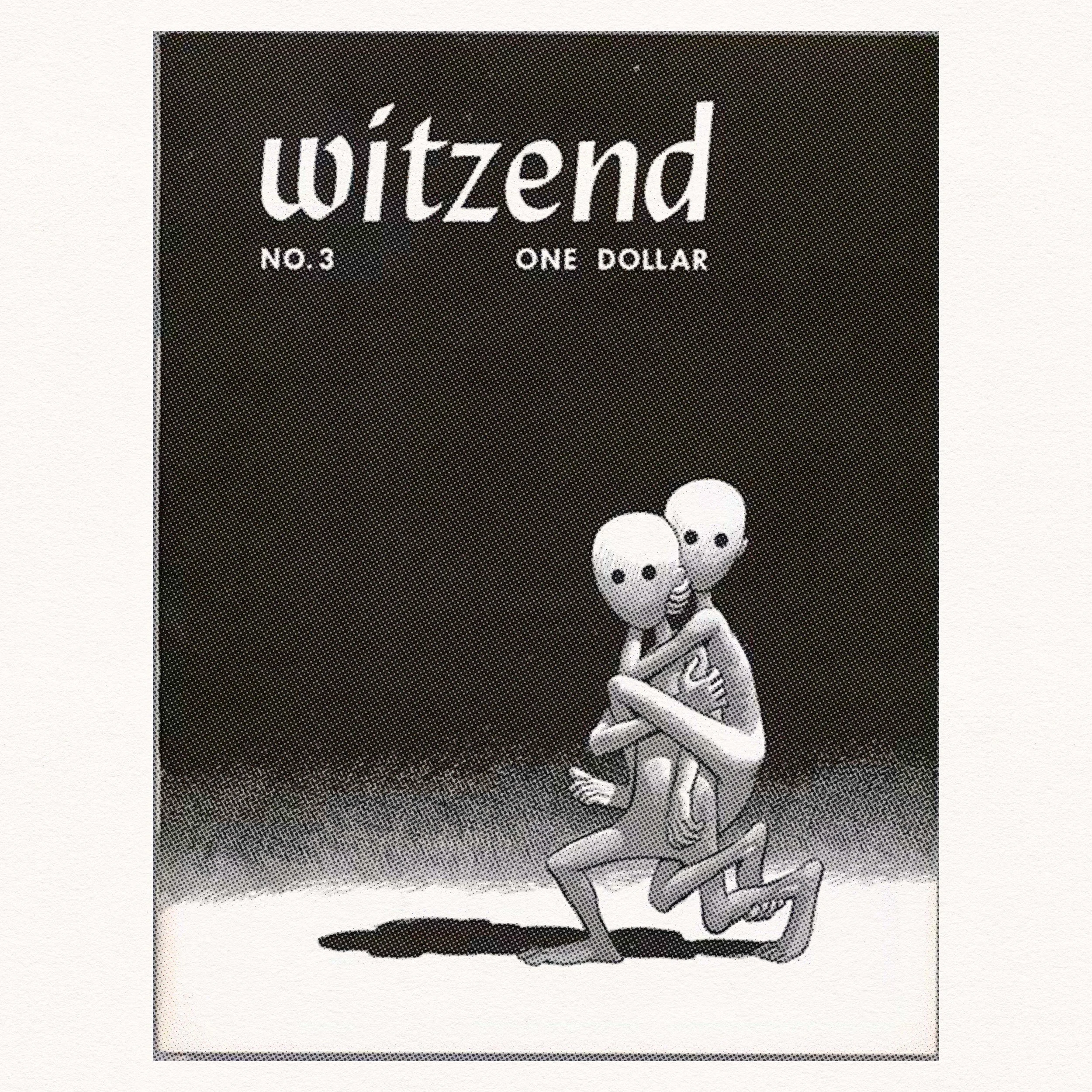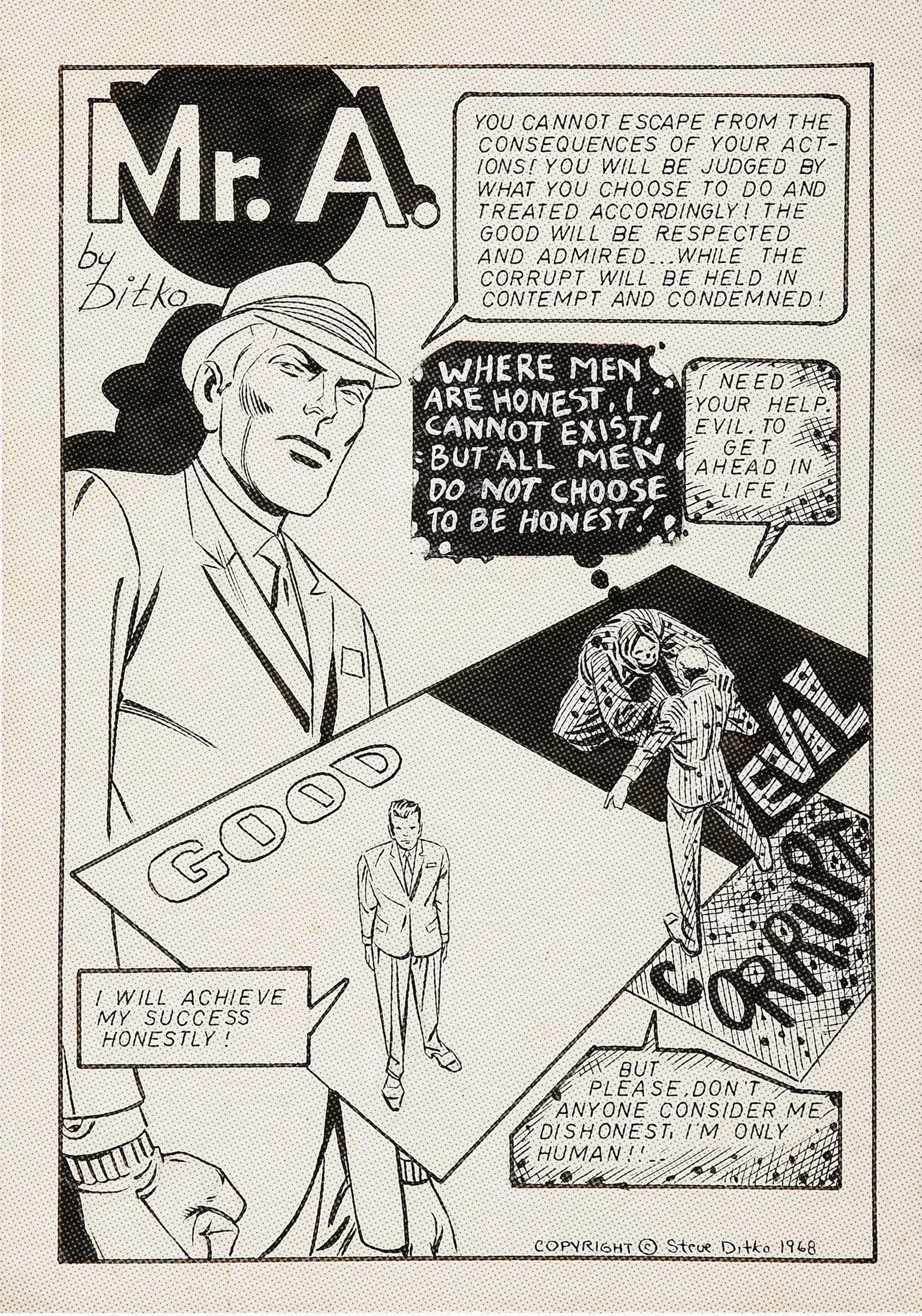Steve Ditko’s Mr. A: Black, White, and Nothing in Between
Mr. A first appears in witzend #3
If you’ve ever flipped through a Steve Ditko comic, you know the man could draw tension like few others. Every shadow had weight, every gesture had intent. But when Ditko stepped away from the mainstream and created Mr. A, he wasn’t just changing publishers — he was stripping the superhero genre down to its rawest form.
In Mr. A, there’s no middle ground. The stories hammer that point home with a visual language that’s as uncompromising as the character himself: deep black shadows, blinding white light, and an absolute refusal to blur the two. Even the title card spells it out — white is good, black is evil, no shades of gray. It’s not subtle, and it’s not meant to be.
Ditko used the editorial pages to explain exactly what he was doing. He wasn’t hiding behind vague slogans or corporate mandates; he laid out his philosophy with the same directness he used in his art. Heroes in Mr. A don’t bend rules, they don’t strike deals, and they don’t overlook “minor” wrongs for the sake of convenience. In his words, compromise with evil is still evil.
But here’s what’s fascinating: that clarity of vision gives the book its punch. You might not agree with every word on the page, but you feel the conviction behind them. The street-level crimes are staged like morality plays — kidnappings, double-crosses, desperate grabs for cash — each one spiraling into chaos as the characters make their choices. And when Mr. A steps in, he’s not just another masked avenger; he’s the embodiment of the book’s core belief that actions have consequences, and those consequences can’t be negotiated away.
Reading Mr. A today is a reminder of what happens when a creator answers only to themselves. It’s art with no safety net — the writing, the panel layouts, the moral arguments, all driven by one person’s vision. Whether you walk away inspired, challenged, or just stunned by the sheer intensity, it’s hard not to respect the purity of the thing.
If you ever see an original issue, grab it. You won’t just be buying a comic — you’ll be holding a manifesto in ink.



